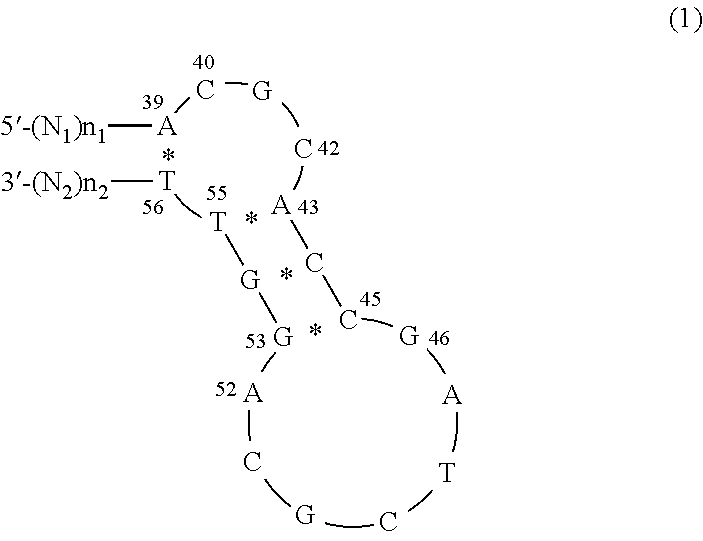Analytical device and analytical method
- Summary
- Abstract
- Description
- Claims
- Application Information
AI Technical Summary
Benefits of technology
Problems solved by technology
Method used
Image
Examples
Embodiment Construction
[0012]Nucleic Acid Element
[0013]In the present invention, the nucleic acid element includes a first nucleic acid molecule and a second nucleic acid molecule as mentioned above. The first nucleic acid molecule is a nucleic acid molecule capable of binding to a target. The second nucleic acid molecule is a nucleic acid molecule capable of binding to streptavidin. When the target does not bind to the first nucleic acid molecule, a binding capacity of the second nucleic acid molecule to the streptavidin is inactivated. When the target binds to the first nucleic acid, a binding capacity of the second nucleic acid molecule to the streptavidin is activated.
[0014]It is only necessary for the first nucleic acid molecule to be a nucleic acid molecule capable of binding to the target. The first nucleic acid molecule can be selected as appropriate according to the type of the target to be analyzed, for example. Whether or not the first nucleic acid molecule can be bound to the target can be det...
PUM
| Property | Measurement | Unit |
|---|---|---|
| Fraction | aaaaa | aaaaa |
| Structure | aaaaa | aaaaa |
| Electrochemical properties | aaaaa | aaaaa |
Abstract
Description
Claims
Application Information
 Login to View More
Login to View More - R&D
- Intellectual Property
- Life Sciences
- Materials
- Tech Scout
- Unparalleled Data Quality
- Higher Quality Content
- 60% Fewer Hallucinations
Browse by: Latest US Patents, China's latest patents, Technical Efficacy Thesaurus, Application Domain, Technology Topic, Popular Technical Reports.
© 2025 PatSnap. All rights reserved.Legal|Privacy policy|Modern Slavery Act Transparency Statement|Sitemap|About US| Contact US: help@patsnap.com



